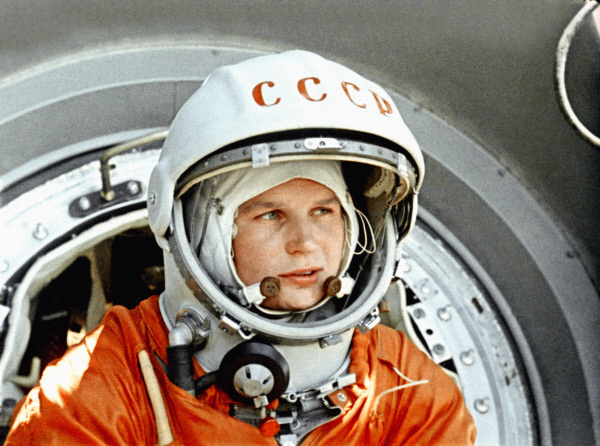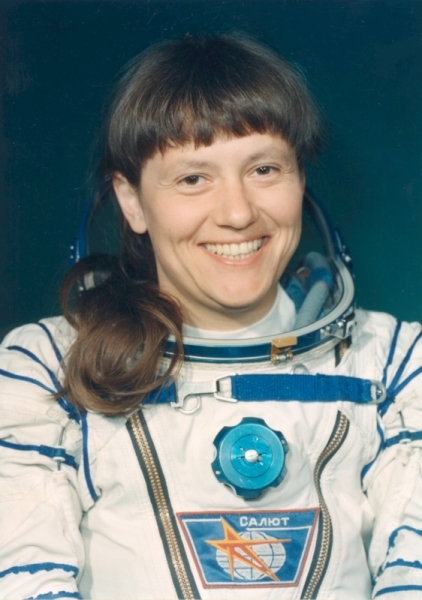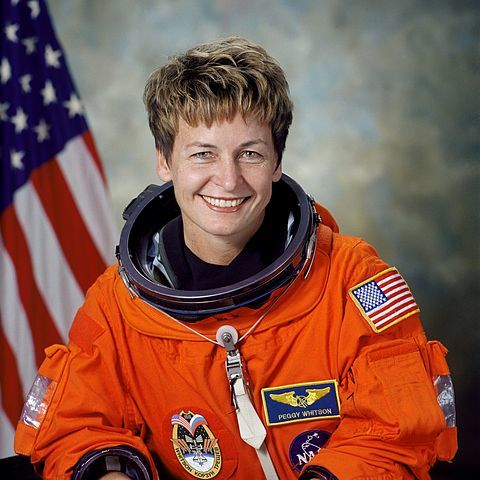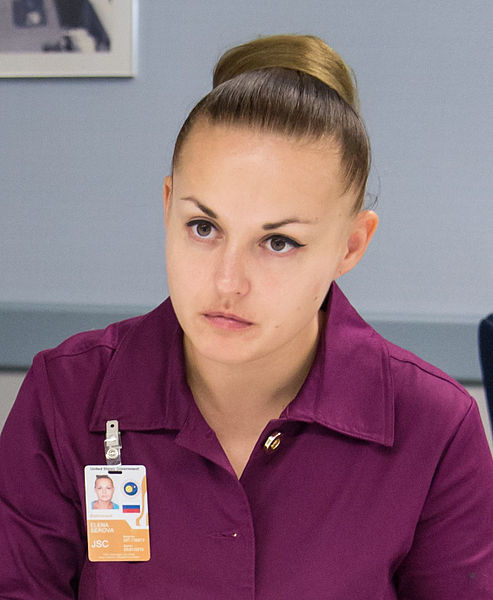Women and Space or planet enlightenment Development Delay

Having written a week ago about the Luna 2015 experiment with a fully female crew, I was unpleasantly struck by the abundance of stupid jokes and misogynistic comments. Well, this is a great occasion to talk about women in space.
History

The first female astronaut, Valentina Tereshkova, is world famous. Starting on June 16, 1963 on the Vostok-6 spacecraft, Valentina spent almost three days in space.
But the successful flight as a whole was not perfect - Tereshkova didn’t clearly communicate, had problems building the landing orientation of the ship (the now repeated story about the incorrect orientation in the program and the “reprogramming” of Vostok-6 does not correspond to reality), she accidentally scratched the porthole and broke her pencil . When landing, in violation of instructions, she raised her head up and earned a bruise on her nose from a blow with a helmet when the catapult turned on. After planting, again in violation of instructions, she distributed her space diet to the collective farmers, possibly hiding the fact that she ate almost nothing in flight. Now this does not seem serious, we know that about half of the astronauts suffer from vestibular disorders at the beginning of the flight. But then this imperfect flight was superimposed on the political aspects of the choice of crews and the reaction “so that the Indian spirit was not here!” Sergey Pavlovich Korolev - women in the USSR stopped flying into space for almost 20 years.

It is much less well known that at about the same time in the United States, women made great efforts to break into space. It all started with scientific curiosity - Dr. William Lovelace, who conducted medical testing of male candidates for the first detachment of US astronauts, offered to pass the same tests to the famous pilot Geraldine Cobb. Geraldine, who at the age of 19 taught men how to fly, and by the end of the 50s set several aviation records, successfully coped with difficult and very uncomfortable medical tests. She also became the only woman who underwent all three phases of medical testing (medical examination, isolation and mental assessment, advanced examination on military equipment using jet aircraft). In addition to Cobb, another twelve women successfully completed the first phase of testing. Women from the squad called Mercury 13, it would have been able to become an astronaut, if not for politics. The requirements of NASA were prescribed mandatory experience as a military test pilot, and there were no such women. The US President, who directly established these requirements, did not change them for the sake of women. None of the Mercury 13 squad flew into space.

The second woman in space was Svetlana Savitskaya. She went on a flight to the Salyut-7 orbital station in 1982. And in 1984 she became the first woman to make two space flights, and the first woman to go into outer space. Before the start of her space career, Svetlana flew jet aircraft, set several records on the MiG-25. After leaving the cosmonaut corps, she worked at the Moscow Aviation Institute, and then became a deputy.

Svetlana Savitskaya works in outer space
American women astronauts appeared only with the beginning of the Space Shuttle program. The eighth astronaut squad, which was recruited in 1978, included the first six women:

From left to right: Shannon Lusid, Margaret Seddon, Katherine Sullivan, Judith Reznik, Anna Fisher, Sally Ryde
A lucky ticket to become the first woman astronaut in the United States was Sally Ryde - she flew in 1983. The five remaining women set their records. The first American to enter outer space was Catherine Sullivan. Margaret Seddon was the mother of three children at the time of the selection, but the first of the mothers was in space, Anna Fisher, who gave birth to a daughter already in the astronaut squad. At the time of the flight, my daughter was only a year and a half. Shannon Lusid became the first woman to make five space flights, and also became the first American to visit the Mir station. Judith Reznik became the first American of Jewish descent in space.

The first female astronaut in Russia was Elena Kondakova. She also became the first woman to fly two different types of spaceships - the Soyuz (1994-1995) and the Space Shuttle (1997).

The first female pilot and commander of the Space Shuttle was Eileen Collins. She piloted the shuttle for the first time in 1995 in the mission of docking with the Mir station, and she became the first commander in the STS-93 mission, when the Chandra X-ray telescope, which is still operating, was successfully put into orbit.

Women were the main ones on the ISS - Peggy Witson commanded the ISS from October 2007 to April 2008.

From left to right: Judith Reznik, Krista MacAuliffe, Laurel Clark, Kalpana Chawla
Working together with men in space, women shared a sadder fate - out of 14 astronauts who died on the space shuttles, four were women. Judith Reznik and Krista MacAuliffe died in the Challenger, and Laurel Clark and Kalpana Chawla died in Columbia.

Today, women continue to work in space. In 2014, Elena Serova became the first Russian woman on the ISS.

On June 11, 2015, Samantha Cristoforetti returned from the ISS, because of the Progress accident, she became a champion among women in the duration of a continuous space flight.

In 2016, Kathleen Rubens is supposed to go to the ISS
Enlightenment Planet Delayed Development
Astronaut Mike Mullane described very well how he changed while working with women at NASA. I offer you excerpts from his memoirs “Riding on the rockets: the outrageous stories of the space shuttle astronaut” (my translation).
On my first day as an astronaut candidate, I came across two things that I had never encountered in my life: choosing what to wear for work and working with women. <...> And if the question of what to wear, I was simply perplexed, then the female colleagues for me were like from another galaxy. I considered women only as sexual objects - an unintended consequence of twelve years of education in Catholic schools. Priests and nuns drove into me the idea that women are identical with sex, and sex meant eternal torment in hell. Girls have never been discussed in a different context. They were never spoken of as people who can dream. It was not a question of female doctors, female scientists, female astronauts. Women were only spoken of as "causes of sin." The only thing I knew about women as a teenager was that the direct road to hell lies between their legs. And their breasts will introduce you to Beelzebub. Even fantasies about their breasts and other parts of the body (the mortal sin of “unclean thoughts”) will send you directly to hell. Only in marriage did the rules change. There sex became the norm - for procreation. A married woman reached her highest status in life - to conceive and give birth to children. “The main purpose of marriage is the birth of children” - such was the dogma in the textbook “The Course of Marriage” of 1963 by my wife, who graduated from St. Mary's School.
The same textbook contained a lesson in “male and female psychology” with a table of characteristics. “Men are more realists, women are idealists. Men are more emotionally stable, women are emotionally weaker. A man loves his job, a woman loves his man. ” And, my favorite, "Men are more often right, women are more often wrong."
I took these perverted sexist statements so fully that I wrote an essay in high school that women should be prohibited from going to college. I got "excellent." I turned out to be a good student.
<...>
The U.S. Air Force officer corps, where I ended up in 1967, was a completely male organization. I have not seen a single woman pilot. On Friday nights at the club we were entertained by strippers. Military pilots regarded women only as “receiving nests”. Anyone who spoke otherwise must have been about to run for Congress. Women may be from Venus, normal men from Mars, but military pilots come from the planet Delayed Development.
At first, the choice of Mullain’s words in communication with women did not differ from what he would use in the men's team. But among the six women of the eighth detachment of astronauts there were also feminists. A careless joke with the mention of the word “boobs” in the presence of Sally Ryde led to the fact that she did not talk to him more than was necessary for work, about ten years. Mullane was not alone in his backwardness - other astronauts, former military pilots, staged idiotic pranks and came up with jokes that I did not want to translate. But work with civilians and women was instructive - these people might not know how to drink a burning cocktail, but they turned out to be no weaker in spirit, and did their job well. At the end of the book, Mike directly writes:
Without a doubt, my NASA experience has changed my personality in the field of attitudes towards women. I realized that they are the same people with dreams and ambitions, and they only need the opportunity to prove what they are capable of. And the women of the eighth set of astronauts coped. Watching how Margaret Seddon, pregnant in the ninth month, pilots the shuttle simulator, performing one after one faultless landing, was for me a lesson in their competence. Watching the broadcast from space, where she performs an unplanned and dangerous operation with the shuttle manipulator in order to turn on the faulty satellite, was a lesson. Knowing that Judy could have turned on Mike Smith’s breathing apparatus in the hell Challenger had turned into was a lesson. Constantly showing his professionalism, skill and courage,
Conclusion
There are people who can be astronauts. Their gender is important for specific physiological issues or for specialists at the level of the Institute of Biological Medicine, RAS. There are people who cannot be astronauts, due to poor health, psyche or bad temper. And gender is not important here.
